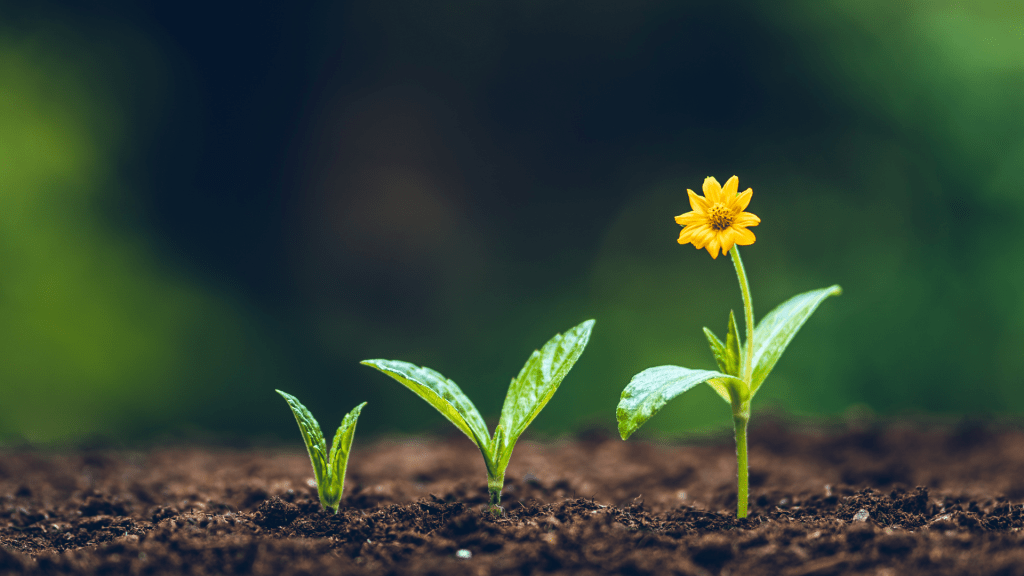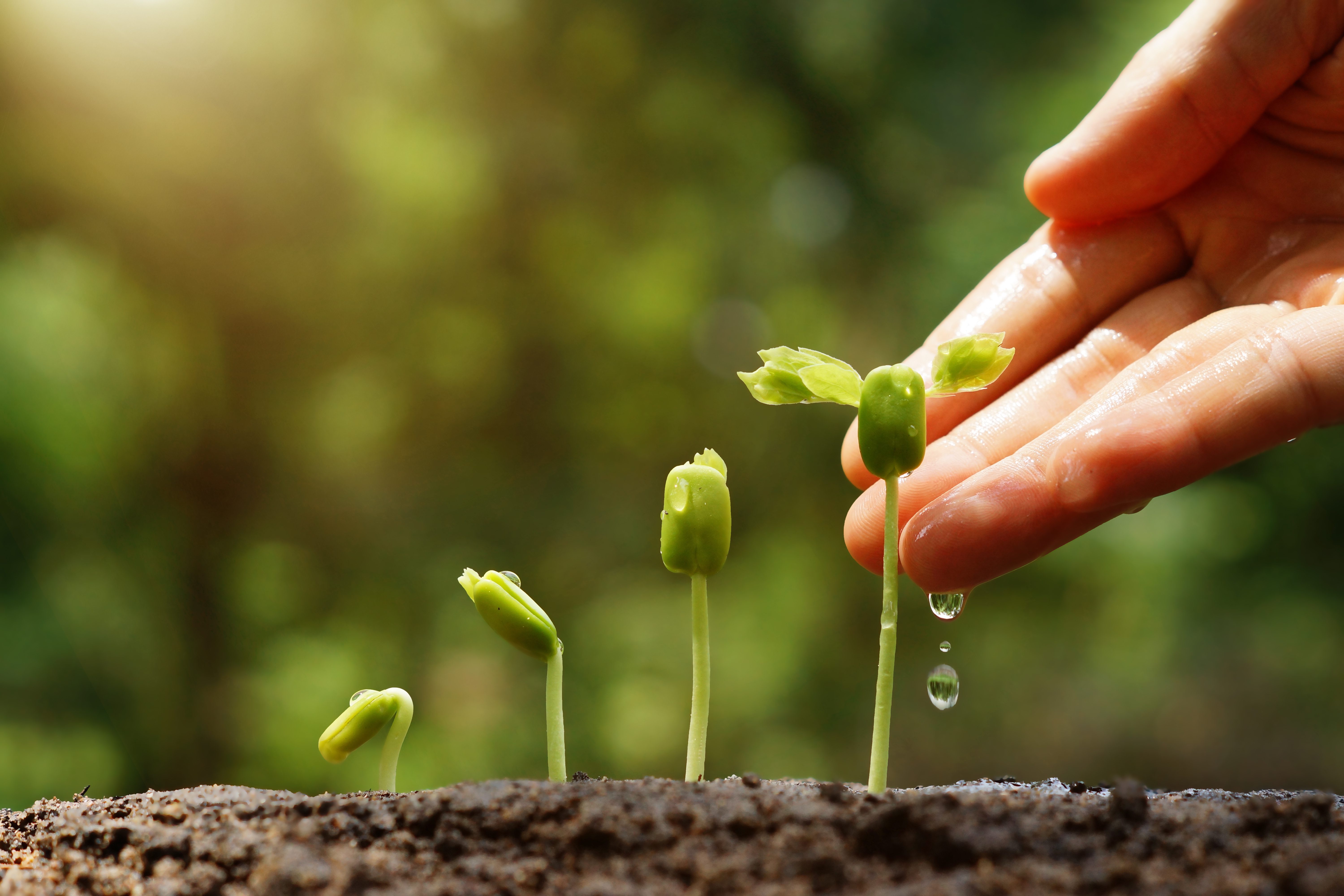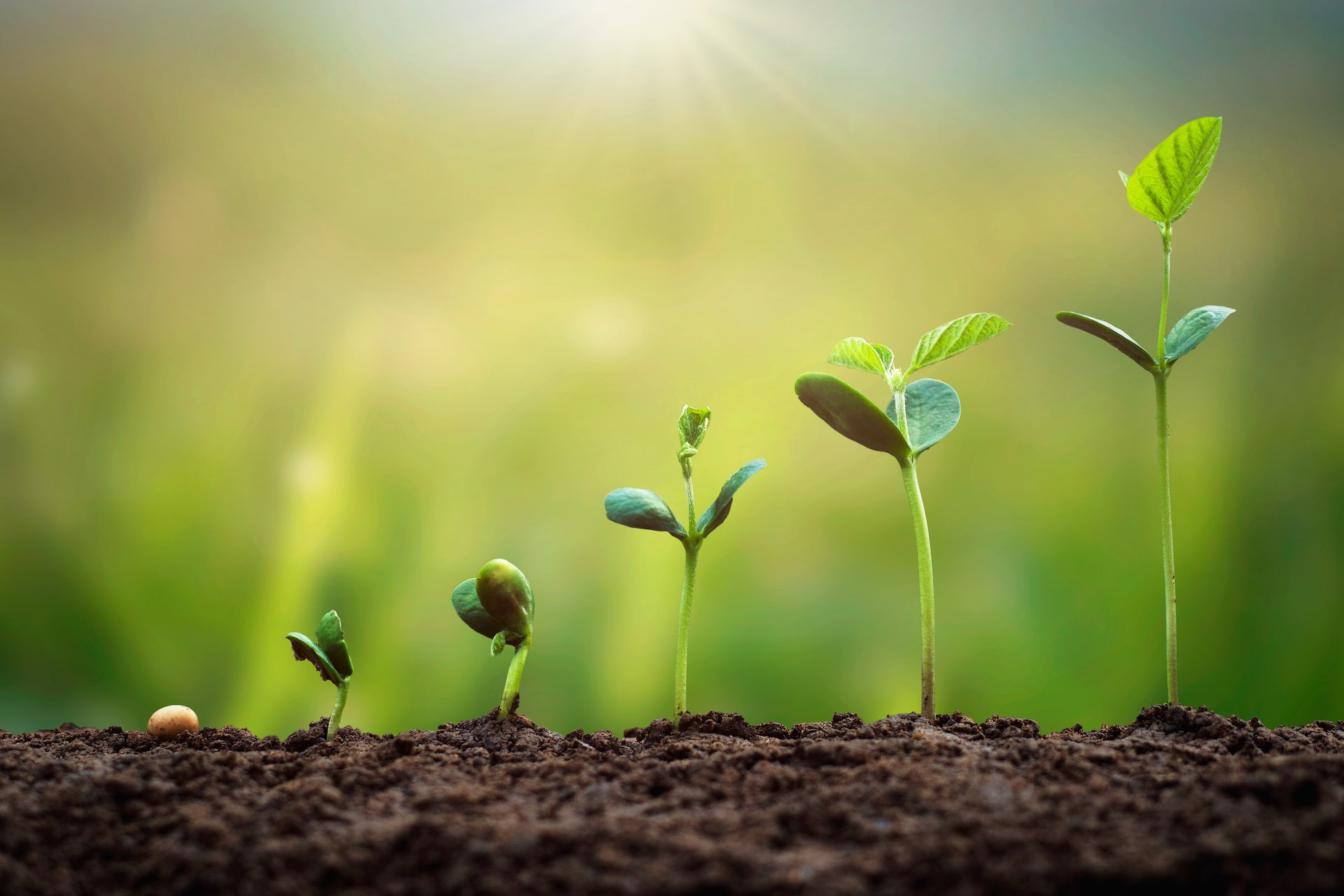Thinking about getting your hands dirty and bringing some delicious food from your own yard to your kitchen table? Well, growing your own "taters" is a really satisfying experience, you know, from putting those little starter potatoes into the ground to digging up a whole bunch of tasty food later on. It’s a process that, in a way, connects you right back to the earth, and the reward is truly something special, especially when you consider how easy it can be to get going with it.
You might be surprised at just how straightforward it is to have a potato patch. These little underground gems are, you see, quite forgiving. They don't ask for a lot of fuss once they get going, and they can give you a pretty generous amount of food for your efforts. It's not a complicated thing to do, honestly, and the feeling of pulling fresh potatoes from the soil is something you really have to experience for yourself to get a full picture of the joy it brings. It's just a little bit of work for a lot of goodness.
This guide here is going to walk you through everything you might want to know about getting your own potato plants going. We'll talk about what kinds of potatoes you can pick, how to get them planted, and what to do to keep them happy. We'll even cover when it's time to gather your crop. So, if you're a fan of these versatile veggies, or if you're just curious about starting a little garden project, you've come to the right place. We're going to make it pretty simple for you, more or less.
Table of Contents
- Getting Started with Your Potato Patch
- What Do Potatoes Need to Grow?
- Picking Your Potato Pals
- Varieties to Grow Potatoes
- How to Plant Your Spuds
- Planting Methods to Grow Potatoes
- Caring for Your Growing Potato Plants
- When is it Time to Dig Up Your Treasures?
- Harvesting Your Grow Potatoes
- Frequently Asked Questions About Growing Potatoes
- Can I grow potatoes in a small space?
- What about growing potatoes from actual seeds?
Getting Started with Your Potato Patch
Starting your own potato patch isn't, you know, some incredibly tough gardening feat. It's something many people can do with just a little bit of planning and some good information. The whole idea is to give your potato plants the best possible start so they can produce plenty of those delicious tubers for you. It's about setting them up for success, basically. You don't need a huge farm or anything; even a small corner of a yard or some containers on a porch can work out pretty well for this kind of project. It’s pretty accessible, actually.
The main things to keep in mind when you're just getting going are choosing a good spot for your plants and making sure the ground they'll be in is ready for them. These steps, you see, lay the groundwork for everything else. You want to pick a place where they'll be happy and healthy, and that often comes down to just a few simple conditions. It's not about being a master gardener right away, but more about understanding what these particular plants really like to have around them to thrive. So, we'll talk about those key conditions next, to be honest.
What Do Potatoes Need to Grow?
Potatoes, as a matter of fact, aren't too picky, but they do have some preferences that help them do their very best. One big thing they appreciate is plenty of sun. They really soak up those rays, and a spot that gets a good amount of sunlight throughout the day is going to make them much happier. Think of it like giving them a sunny vacation spot. So, when you're looking for a place to put your plants, try to find somewhere that gets at least six hours of direct sun each day, if you can. That's a pretty good starting point, you know.
Another thing that helps these plants out is the kind of dirt they're in. They really like soil that's a bit on the acidic side. It helps them take up the nutrients they need from the ground. Also, they prefer ground that's loose and fertile, not hard and compacted. This allows their underground parts to spread out and grow bigger without too much trouble. And, of course, water is a big deal. They need a steady supply of moisture to help those tubers plump up. It's not about drowning them, but giving them regular drinks, especially when it's warm and they're really growing. That's pretty much it for their basic needs, essentially.
For folks in places with warmer weather, especially down in southern areas, there's a little trick to getting the most out of your potato growing. It's often better to plant them in the cooler months, like fall, winter, and spring. They really don't care for hot summer temperatures, so giving them a chance to grow when it's a bit milder means they'll produce more for you. They just do better when it's not scorching hot, you know. So, if you live in one of those warmer spots, planning your planting for the cooler parts of the year is a smart move, pretty much.
Picking Your Potato Pals
When you decide to grow potatoes, you'll find there are quite a few different kinds to pick from, and that's actually part of the fun. Each type has its own little quirks, like how it tastes, what it's good for in the kitchen, or how it grows. Some might be better for baking, others for mashing, and some are just right for a good roast. So, thinking about what you like to eat and how you plan to use your homegrown spuds can help you choose the perfect ones for your garden. It's kind of like picking out different kinds of apples, you know, each one has its own charm.
You'll typically start with what are called "seed potatoes." These aren't like regular seeds you'd find in a packet; they're actually small potatoes or pieces of larger ones that have little "eyes" on them. These "eyes" are where the new plants will sprout from. It's a pretty cool way they get started, honestly. Learning about these different types of starter potatoes and how to get them ready for planting is a big part of getting your potato growing adventure off to a good start. It's a simple step, but it makes a big difference, at the end of the day.
Varieties to Grow Potatoes
There are, you know, so many different kinds of potatoes out there, it's almost dizzying. You've got your classic russets, which are great for baking and frying because they get nice and fluffy. Then there are the red-skinned ones, which tend to hold their shape better when boiled or used in salads. And don't forget the yellow-fleshed varieties, which often have a rich, buttery taste all on their own. Each one offers something a little bit different for your cooking adventures, you see.
Some people really like to grow potatoes that are known for being very productive, meaning they give you a lot of food from each plant. Others might prefer a type that matures quickly, so they don't have to wait as long for their harvest. And then there are those who are just looking for a unique color or shape to make their meals a bit more interesting. It really just depends on what you're hoping to get out of your garden, doesn't it? Taking a moment to look into a few options can really pay off in the long run, seriously.
How to Plant Your Spuds
Getting your potato starters into the ground is, well, pretty straightforward, honestly. The timing for this step is pretty important, though, especially if you live in a place that gets cold weather. A good rule of thumb is to put your potato pieces in the ground about four to six weeks before the average date of the last frost in your area. This gives them a good head start without risking them getting zapped by a late cold snap. It's all about playing it safe with the weather, you know.
You'll want to pick a spot that gets plenty of sunshine, as we talked about before, and make sure the soil is nice and loose. Potatoes don't like to struggle when they're trying to grow their tubers, so a soft, rich bed for them is really what you're aiming for. Once you have your spot, there are a few ways to actually get those little starter potatoes planted. It's not just one way, you see, there are options depending on your space and what you prefer. We'll go over some of those common approaches next, basically.
Planting Methods to Grow Potatoes
When it comes to putting those potato pieces into the ground, there are a few popular ways to go about it. One common method is to dig a trench, place your potato pieces in it, and then cover them up. As the plants grow taller, you keep adding more soil around the stems, a process often called "hilling." This helps to protect the developing potatoes from sunlight, which can turn them green and make them taste bitter. It's a pretty traditional way, you know, and it works very well.
Another pretty neat way to grow potatoes, especially if you don't have a lot of garden space, is to use containers. You can use large pots, old tires, or even special potato bags that are sold for this purpose. You start by putting a layer of soil at the bottom, placing your potato pieces on top, and then covering them. As the plant grows, you just keep adding more soil or compost to the container, much like hilling in the ground. This is super handy if you have a small backyard, or even just a balcony, honestly. It makes growing them very accessible.
Some people, as a matter of fact, also like to try growing potatoes from actual seeds, which is different from using those starter potato pieces. This method is, you know, gaining some popularity, and it can be a fun experiment if you're feeling a bit adventurous. It gives you a chance to try out some different things, and you might even get some unique potato types this way. We won't go too deep into that specific method here, but it's good to know it's an option for those who are curious, kind of.
Caring for Your Growing Potato Plants
Once your potato plants are in the ground and starting to sprout, keeping them happy isn't really that hard. They are, you know, relatively simple to look after, and they don't demand constant attention. The main things you'll want to keep an eye on are making sure they get enough water and doing a bit of hilling as they grow. That hilling, remember, is just adding more soil around the base of the plant to cover the stems and keep those developing potatoes from seeing the sun. It's a pretty important step for good results, basically.
Regular watering is pretty key, especially when the plants are flowering and when the potatoes themselves are getting bigger underground. You want the soil to be consistently moist, but not soaking wet. Think of it like giving them a good drink every so often, rather than just a little sip. If the weather is dry for a while, you'll definitely want to give them some extra water. Other than that, they don't typically need a lot of fuss. Just making sure they're not too thirsty is a big part of keeping them healthy and productive, honestly.
When is it Time to Dig Up Your Treasures?
Knowing when your homegrown potatoes are ready for harvesting is, well, pretty exciting, isn't it? It's the moment you've been waiting for, when all your efforts pay off. Generally speaking, you'll know it's time when the plant itself starts to tell you. The green leafy parts above the ground will begin to turn yellow and then brown, and they'll start to die back. This is a sign that the plant has put all its energy into making those delicious tubers underground, and they're ready to be collected. It's a pretty clear signal, you know.
It's usually a good idea to wait a week or two after the plant tops have completely withered before you start digging. This gives the potato skins a chance to "set" or toughen up a bit, which helps them store better. If you dig them up too early, the skins might be very thin and easily damaged. So, patience is a little bit of a virtue here, you see. You don't want to rush that last step, otherwise, you might not get the best storage out of your crop, kind of.
Harvesting Your Grow Potatoes
When you're ready to actually get those potatoes out of the ground, you'll want to be a little bit careful not to poke them with your digging tool. A garden fork is often better than a shovel for this, as it's less likely to slice into the potatoes. Start digging a little way from the main stem of the plant, and work your way in gently. You'll be surprised at how many potatoes can be hiding under just one plant! It's like a little treasure hunt, honestly, and it's very rewarding.
Once you've dug them up, it's a good idea to let them dry out for a few hours in a shady spot, or even a day or two if the weather is good. Don't wash them until you're ready to use them, as the dirt actually helps protect them for storage. After they're dry, you can brush off any loose soil and store them in a cool, dark, and dry place. This helps them last longer, so you can enjoy your homegrown spuds for weeks, or even months. It's a simple process, but definitely worth doing right, basically.
Frequently Asked Questions About Growing Potatoes
People often have a few common questions when they're thinking about starting to grow potatoes. It's natural to wonder about the best ways to do things, especially if you're new to gardening or trying a new plant. We've covered a lot of the basics already, but sometimes a quick answer to a specific question can really help clear things up. So, let's go over a couple of those common queries that often come up, you know, just to make sure we've got all the bases covered for you.
Can I grow potatoes in a small space?
Absolutely, you can definitely grow potatoes even if you don't have a big garden plot! This is actually one of the really cool things about them. As we talked about earlier, using containers is a fantastic option for small areas. Large pots, buckets, grow bags, or even old laundry baskets can work. The key is that they need to be deep enough to allow the potato plants to grow upwards and for the tubers to form beneath the soil. It's pretty adaptable, honestly, which makes it a great choice for urban gardeners or anyone with limited yard space. You can get a surprising amount of food from a small setup, seriously.
Even a small backyard can give you plenty of room for a few potato plants. You don't need rows and rows; just a sunny corner will often do the trick. The fact that they can grow in bags on a balcony means that nearly anyone with a bit of outdoor light can give it a go. It's all about making the most of the area you have, and potatoes are pretty forgiving in that regard. So, don't let a lack of sprawling green space stop you from giving this rewarding activity a try, you know, it's more accessible than you might think.
What about growing potatoes from actual seeds?
Yes, you can, as a matter of fact, grow potatoes from actual botanical seeds, which are those tiny little seeds you'd find in a packet, just like tomato or pepper seeds. This is different from using "seed potatoes," which are pieces of potatoes that sprout. Growing from true seeds is a bit more of a specialized approach, and it's not as common for the average home gardener, you know. It can take a bit longer to get a harvest, and the potatoes you get might not be exactly like the parent plant, which can be interesting if you're into experimenting.
Most home gardeners, and really, the most popular way to get started, is by using those "seed potatoes" or potato pieces with eyes. They tend to be more reliable for getting a good crop, and it's generally a simpler process for beginners. So, while growing from true seeds is an option, it's probably something you'd explore once you've got a few successful potato harvests under your belt using the more traditional method. It's kind of like an advanced project, if you want to think of it that way, basically.


